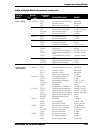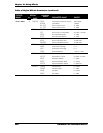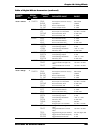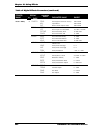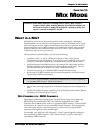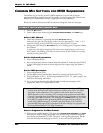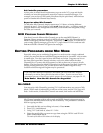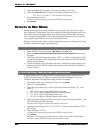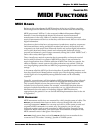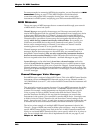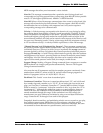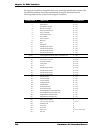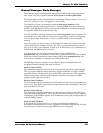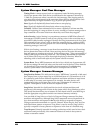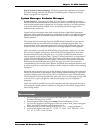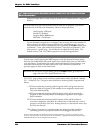
Chapter 12: MIDI Functions
ANDROMEDA A6 REFERENCE MANUAL 247
CHAPTER 12:
MIDI FUNCTIONS
MIDI BASICS
Before we delve into the specific MIDI functions of the A6, we’d like to provide a
brief background on MIDI for those who may not be familiar with this technology.
MIDI (pronounced “MID-ee”) is the acronym for Musical Instrument Digital
Interface. It was developed and adopted by electronic musical instrument
manufacturers in the early 1980s as a common system of connecting electronic
musical instruments and devices so that they could share music data as well as other
digital information.
Just about any device that has a microprocessor (synthesizers, samplers, sequencers
and drum machines, analog and digital recorders and mixers, effects devices and
computers) can share music data (notes and chords) and various digital information
such as pitch bend and vibrato, sustain and volume pedal, keyboard velocity,
pressure and aftertouch, patch change commands, timing data (called “MIDI Clock”)
and a wide variety other types of data.
Thus, virtually any musical expression that is generated by an electronic musical
device could be shared in a system of MIDI devices. But we are not limited to
musical applications alone. With the addition of MIDI Time Code for example, the
ability to interface a music system with video production was realized. There are
even stage lighting systems that use MIDI for programming light control and data
storage.
A document called the MIDI Specification describes all possible MIDI functions and
how they should work. Manufacturers use this spec when designing products so that
a fairly high level of compatibility among different brands can be reasonably
expected.
Generally, a manufacturer will also include a MIDI Implementation chart with each
product so that you can know how MIDI was designed into that particular model.
This is usually helpful to know because not every MIDI function needs to be
included in every musical product. For example, certain MIDI functions that are
unique to keyboard instruments are unnecessary on, say, digital effects devices.
Manufacturers have the option of including whatever MIDI functions are
appropriate to the product. You can find the MIDI Implementation chart for the A6
in Appendix C.
MIDI HARDWARE
MIDI instruments and devices are connected by a fairly simple system of cables. The
MIDI OUT port transmits data from one device one-way through the cable to the
receiving instrument’s
MIDI IN. You can setup each device in the system to send and
respond to MIDI commands in a certain way. For example, you can tell your
keyboard or guitar synth to send everything in MIDI except for Program Change
commands. By the same token, you can tell your sound module to respond to any
MIDI command sent to it but ignore Velocity data.
MIDI THRU simply passes data received by MIDI IN right back out to another device
connected to it. This makes “chaining” possible in a MIDI system.



